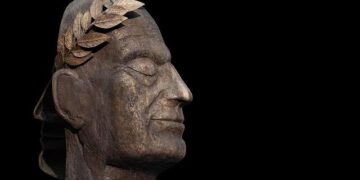Why do humans believe in the supernatural? This age-old question is driving scientists to explore the nature of miracles with unprecedented rigor. In a groundbreaking effort featured by National Geographic, researchers are combining neuroscience, psychology, and anthropology to unravel the origins of religious faith. By studying extraordinary events that defy conventional explanation, scientists hope to uncover why spirituality remains a fundamental part of the human experience across cultures and history.
The Neuroscience Behind Faith and Spirituality
Recent advances in neuroimaging have illuminated how specific brain regions activate during religious experiences, offering insights into why faith is so deeply embedded in human culture. Studies reveal that the temporal lobes, responsible for processing sensory input and emotional memory, often light up during moments perceived as spiritual or miraculous. This suggests that what many interpret as divine encounters may partly arise from natural neurological processes. Furthermore, the brain’s default mode network, associated with self-reflection and theory of mind, plays a critical role in forging a sense of connection with transcendent forces or entities.
Scientists are also exploring how these neural mechanisms might contribute to the social and psychological benefits of spirituality. Research indicates that the activation of certain brain circuits can:
- Enhance feelings of trust and empathy within communities
- Reduce stress by modulating the hypothalamic-pituitary-adrenal axis
- Increase resilience through release of neurotransmitters like dopamine and serotonin
| Brain Region | Function | Spiritual Correlation |
|---|---|---|
| Temporal Lobes | Processing sensory input | Mystical experiences |
| Prefrontal Cortex | Decision making, social behavior | Moral reasoning |
| Default Mode Network | Self-referential thought | Connection to self and others |
Unveiling the Psychological Impact of Belief in Miracles
Belief in miracles taps into a profound psychological need for hope and meaning, especially in times of uncertainty and distress. Researchers have found that this faith acts as a powerful coping mechanism, offering emotional relief and a sense of control when life feels unpredictable. Neurological studies reveal that when individuals witness or believe in miraculous events, areas of the brain linked to reward and social bonding light up, reinforcing feelings of trust and communal connection.
Key psychological effects include:
- Reduction of anxiety through positive expectancy
- Strengthening of personal identity and moral frameworks
- Promotion of altruistic behaviors within social groups
- Enhanced resilience in facing trauma and loss
| Effect | Psychological Benefit | Scientific Observation |
|---|---|---|
| Hope | Motivation and optimism | Increased dopamine activity |
| Social Bonding | Sense of belonging | Activation of oxytocin receptors |
| Meaning-Making | Reduced existential distress | Prefrontal cortex engagement |
How Scientific Research Could Transform Our Understanding of Religion
Scientists are beginning to approach religion not just as a cultural or psychological phenomenon but as a subject ripe for empirical study. By analyzing reported miracles and religious experiences through the lens of neuroscience, anthropology, and cognitive science, researchers aim to uncover the biological and social mechanisms behind faith. These investigations challenge long-held assumptions, suggesting that religious belief could emerge from innate brain functions that promote social cohesion and emotional resilience.
Recent studies highlight several intriguing patterns in how humans process miraculous events and spiritual experiences. For example, the brain’s default mode network-active during introspective thought-appears to play a critical role in fostering belief. Moreover, community rituals and shared narratives often fulfill essential human needs, such as:
- Group identity and belonging
- Coping mechanisms in times of stress
- Moral frameworks guiding behavior
| Scientific Discipline | Focus Area | Potential Insight |
|---|---|---|
| Neuroscience | Brain activity during prayer | Links between belief and brain regions |
| Anthropology | Cultural miracle narratives | Evolution of religious practices |
| Cognitive Science | Perception of supernatural events | Understanding belief formation |
Future Outlook
As scientists continue to investigate the mysteries behind miraculous experiences, the intersection of faith and science remains a compelling field of inquiry. While definitive answers about why humans are drawn to religion may still be out of reach, ongoing research offers promising insights into the psychological and neurological underpinnings of belief. What remains clear is that the human quest to understand the extraordinary is as ancient as humanity itself, ensuring that the study of miracles-and the meaning they hold-will continue to captivate both researchers and the public alike.































